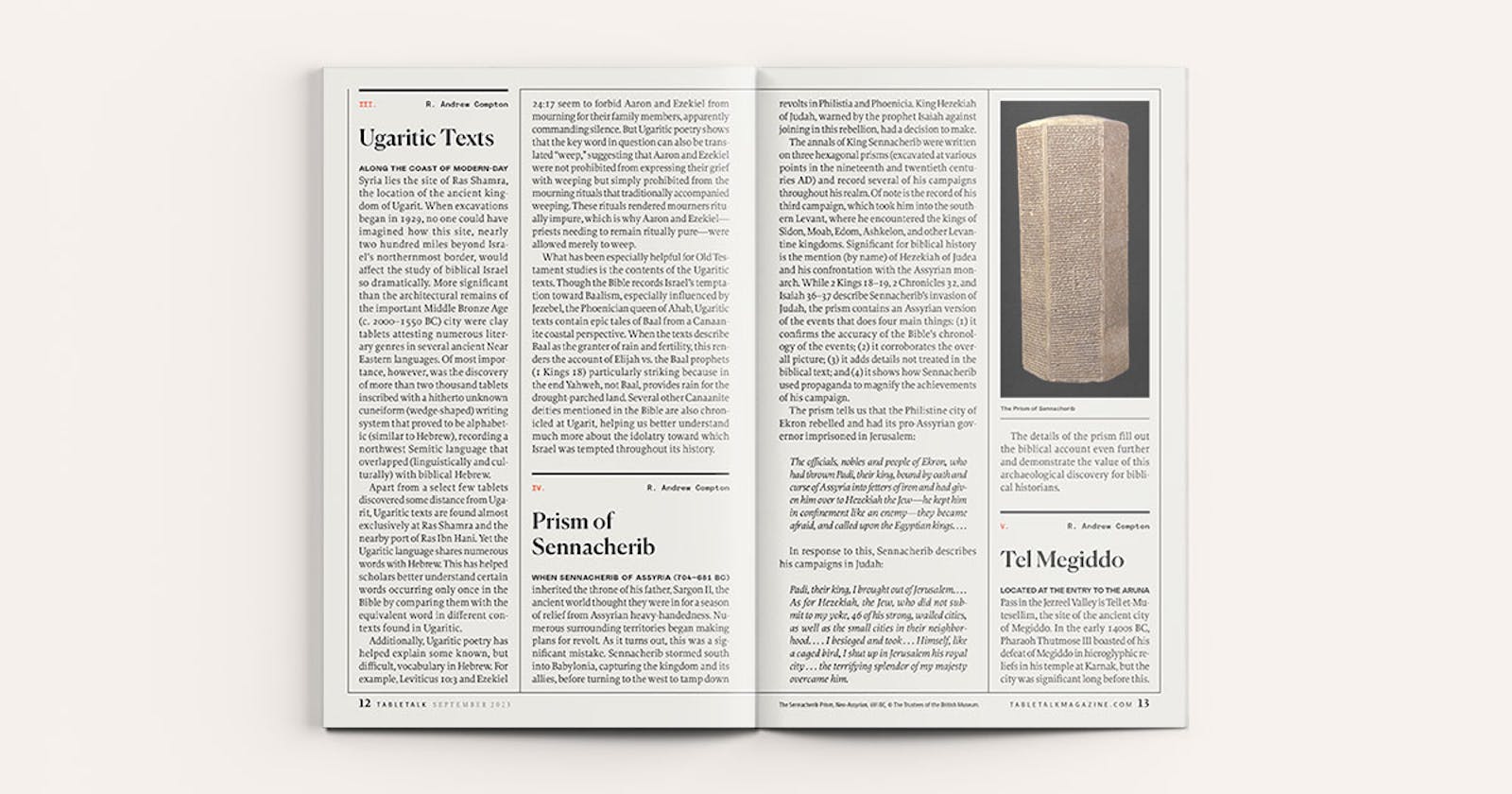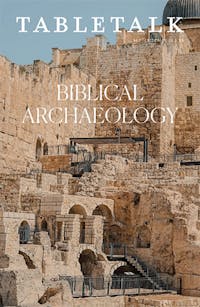
Request your free, three-month trial to Tabletalk magazine. You’ll receive the print issue monthly and gain immediate digital access to decades of archives. This trial is risk-free. No credit card required.
Try Tabletalk NowAlready receive Tabletalk magazine every month?
Verify your email address to gain unlimited access.
Located at the entry to the Aruna Pass in the Jezreel Valley is Tell et-Mutesellim, the site of the ancient city of Megiddo. In the early 1400s BC, Pharaoh Thutmose III boasted of his defeat of Megiddo in hieroglyphic reliefs in his temple at Karnak, but the city was significant long before this. At the beginning of the Early Bronze Age (c. 3200–2350 BC), Megiddo is estimated to have been the largest settlement in the country.
In the Bible, Megiddo first appears in Joshua 12:21 as a city conquered by Joshua. While Joshua 17:11 allocates it to the territory of Manasseh, Judges 1:27 states that the tribe of Manasseh did not drive out its inhabitants. By Solomon’s day, however, things had changed. He stationed a governor there (1 Kings 4:12) and invested resources and manpower to fortify and improve its infrastructure (9:15). Yet apart from these, there are only a few additional passages mentioning Megiddo. While this may seem strange given the city’s size and antiquity, it is not too surprising since Israel did not retain it for long. Pharaoh Shishak recaptured it for a period around 925 BC. Assyria took it decisively in the 730s, turning it into an Assyrian provincial capital. Many battles were fought here throughout its history for control of its strategic position.

Its imposing height and breadth made it appealing to archaeologists (who began excavations by AD 1905), and modern Levantine archaeology in general has benefited from techniques tried at this site. The early strategy of the University of Chicago—to excavate the entirety of one historical period at a time before digging down to the next—proved too ambitious. After all, twenty distinct layers were identified on the thirteen-acre site. This gave way to a more strategic and scientific excavation technique that has yielded significant finds and has informed digging methods applicable to other Levantine locations. The site’s size and strategic location have led some to associate it with the battle of Armageddon in Revelation 16:16. While its mention in an eschatological context in Zechariah 12:11 invites the association, it is actually a misunderstanding of the relationship between the words “Megiddo” and “Armageddon.” The latter derives not from the purported Har Megiddo (Mount Megiddo) but from the Hebrew Har Mo‘ed (Mount of Assembly), found in Isaiah 14:13. Its impressive history as a city and role in the modern enterprise of archaeology make it sufficiently important apart from suggested end-times significance.
